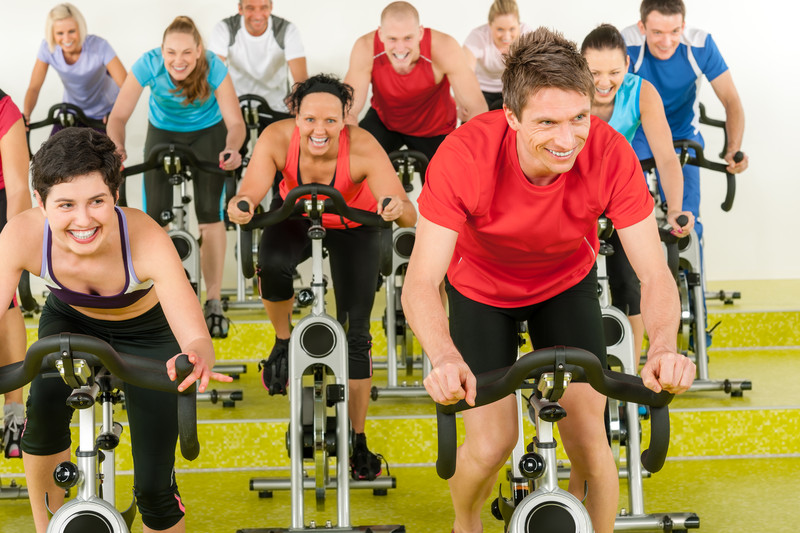What is HIIT?
HIIT is something I get asked about a lot these days. It stands for High Intensity Interval Training or as I often explain it to people……
……it’s a super fat stripping form of intense Cardio.

It is a style of training that involves alternating between periods of very high intensity exercise and moderate to low intensity exercise, usually at a ratio of 2:1 and for a period of 5 to 30 minutes.
For example, a simple running HIIT workout would involve sprinting for 30 seconds, lightly jogging for 15 seconds and then repeating this cycle for 5 minutes.
HIIT has become increasingly popular in recent years with many people praising its efficiency, effectiveness and fat burning properties. But not everyone is a convert as there are other health and fitness ‘experts’ who have criticized HIIT and advised people to maintain a consistent, moderate intensity as they train.
I will be focusing on both the positives and negatives of HIIT and discussing how you can use it in your health and fitness programs.
The 6 Big Benefits of HIIT?
HIIT has plenty of plus points and is definitely something you should consider if you want to add some variety and zip to your training.
The section below briefly highlights the main benefits of adding some HIIT to your exercise program:
1. Short Workouts:
If you lead a busy lifestyle or simply want a fast workout, HIIT is ideal with each workout taking no longer than 30 minutes to complete. It can also be done without any fancy equipment so if you travel a lot and need to keep on top of your fitness then this is ideal.
2. High Calorie Burn:
HIIT burns off a substantial 500 calories per 30 minute session which makes it one of the best options for losing weight.
3. Enhanced Fat Burning:
HIIT burns fat at a much higher rate than steady state cardio and is an excellent way to quickly lower your body fat percentage.
4. Higher Levels of HGH:
HIIT enhances HGH (Human Growth Hormone) production within the body by as much as 450%. HGH stimulates muscle growth, burns body fat, reduces the visible signs of aging and much more.
5. Increased Cardiovascular Fitness:
Just a 2 to 3 HIIT sessions each week will fire up your cardiovascular fitness, enhance your energy levels and improve your stamina.
6. More Enjoyable Workouts:
HIIT is fast paced, fun and no two workouts ever have to be the same.
The 4 Drawbacks of HIIT?
Despite its numerous health benefits, there can be some potential drawbacks to HIIT – these are listed below:
1. Higher Injury Risk:
HIIT places a large amount of pressure on your body and has a high injury risk compared with gentle, steady state cardio exercises. The main reason for this is that people who are unfit and not done much exercise in the past year or so join HIIT programs and end up injured.
I recommend you do NOT do HIIT unless you have a minimum of 3 to 4 months of regular fitness training behind you. If in doubt then see your doctor first (also see #4 below).
2. Longer Recovery Times:
HIIT workouts take an average of 2-3 days to fully recover from, so you can’t perform them every day.
3. Not Specific:
HIIT workouts don’t develop the specific skills that are required to excel in certain sports or fitness disciplines. They are an addition to your fitness training.
4. Not Suitable for Beginners:
HIIT workouts require a high level of fitness and if you’re just beginning your fitness journey, they’re not a viable option.
4 Ways to Use HIIT in Your Training Program
To fully enjoy all the benefits of HIIT, you should use it in combination with your existing training regime and do a maximum of three 30 minute HIIT workouts each week. This will give your body plenty of time to recover from each HIIT workout and significantly reduce your chances of getting injured.
When it comes to integrating HIIT into your existing training program, there are lots of options and you can be as creative as you like. The next section shows some sample HIIT workout ideas to get you started. Also check out Pinterest as there are some great HIIT workouts there:
1. HIIT Bodyweight Workout:
Choose up to 20 bodyweight exercises and then perform each exercise for 1 minute at high intensity and 30 seconds at low intensity for a total duration of 5-30 minutes.
2. HIIT Cycling/Rowing Machine Workout:
Cycle for 1 minute at high intensity and 30 seconds at low intensity for a total duration of 5-30 minutes.
3. HIIT Dumbbell Workout:
Choose up to 20 dumbbell exercises, grab a light set of dumbbells, then perform as many reps as you can within 20 seconds and rest for 10 seconds for each exercise for a total duration of 5-30 minutes.
4. HIIT Sprint Workout:
Find a spot where you can sprint freely and then start sprinting for 20 seconds and resting for 10 seconds for a total duration of 5-30 minutes.
Quick Summary
If HIIT isn’t currently part of your training program, then I hope this article convinces you to give it a try. While it does have some drawbacks, when used sparingly and combined with other styles of training, HIIT can be highly beneficial and will help take your fitness to the next level.
HIIT is even suitable for seniors as long as you follow the advice I have given above and don’t try and do more than your body will allow – it will soon tell you!
Cheers – John, your Active Ageing Coach and Activist.
P.S. Help a friend get fit……like and share.
[…] By raising a sweat and getting your heart rate up with each session you will gain the most benefit. As you get fitter then introduce some HIIT (High Intensity Interval Training) […]